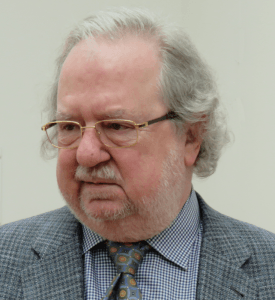Daniel M. Davis in Nautilus:
 Every time Jim meets a patient, he cries,” Padmanee said to The New York Times in 2016. “Well not every time,” Jim added. Jim Allison and Padmanee Sharma work together at the MD Anderson Cancer Center in Houston, Texas, having met in 2005 and married in 2014. A decade before they met, Allison and his lab team made a seminal discovery that led to a revolution in cancer medicine. The hype is deserved; cancer physicians agree that Allison’s idea is a game-changer, and it now sits alongside surgery, radiation, and chemotherapy as a mainstream option for the treatment of some types of cancer.
Every time Jim meets a patient, he cries,” Padmanee said to The New York Times in 2016. “Well not every time,” Jim added. Jim Allison and Padmanee Sharma work together at the MD Anderson Cancer Center in Houston, Texas, having met in 2005 and married in 2014. A decade before they met, Allison and his lab team made a seminal discovery that led to a revolution in cancer medicine. The hype is deserved; cancer physicians agree that Allison’s idea is a game-changer, and it now sits alongside surgery, radiation, and chemotherapy as a mainstream option for the treatment of some types of cancer.
Take one example. In 2004, 22-year-old Sharon Belvin was diagnosed with stage IV melanoma—skin cancer that had already spread to her lungs—and was given a 50/50 chance of surviving the next six months. Chemotherapy didn’t work for her and her prospects looked bleak. “I’ve never felt that kind of pain,” she later recalled, “ … you are lost, I mean you’re lost, you’re absolutely out of control, lost.” All other options exhausted, she signed up to an experimental clinical trial testing a new drug based on Allison’s idea. After just four injections over three months the tumor in her left lung shrunk by over 60 percent. Over the next few months, her tumors kept shrinking and eventually, after two and a half years of living with an intense fear of dying, she was told that she was in remission—her cancer could no longer be detected. The treatment doesn’t work for everyone but, Allison says, “We’re going to cure certain types of cancers. We’ve got a shot at it now.”
More here.
